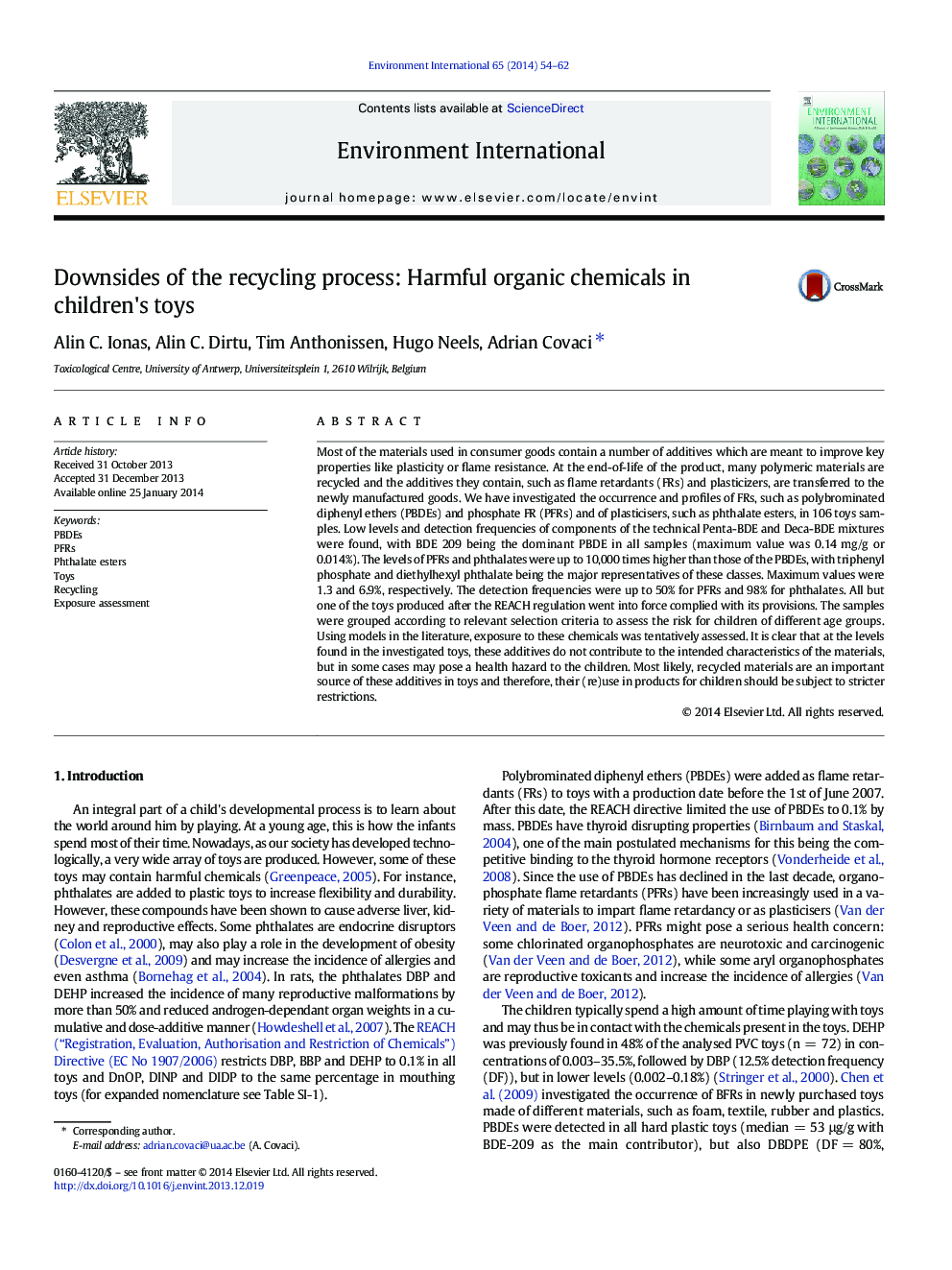| کد مقاله | کد نشریه | سال انتشار | مقاله انگلیسی | نسخه تمام متن |
|---|---|---|---|---|
| 4422805 | 1619063 | 2014 | 9 صفحه PDF | دانلود رایگان |
• Flame retardants and plasticisers were detected in toys from Belgian market.
• Their levels are insufficient to impart flame retardancy or act as plasticisers.
• Samples were selected according to multiple criteria to assess the risk for children.
• Exposure to these chemicals was tentatively assessed using models from the literature.
Most of the materials used in consumer goods contain a number of additives which are meant to improve key properties like plasticity or flame resistance. At the end-of-life of the product, many polymeric materials are recycled and the additives they contain, such as flame retardants (FRs) and plasticizers, are transferred to the newly manufactured goods. We have investigated the occurrence and profiles of FRs, such as polybrominated diphenyl ethers (PBDEs) and phosphate FR (PFRs) and of plasticisers, such as phthalate esters, in 106 toys samples. Low levels and detection frequencies of components of the technical Penta-BDE and Deca-BDE mixtures were found, with BDE 209 being the dominant PBDE in all samples (maximum value was 0.14 mg/g or 0.014%). The levels of PFRs and phthalates were up to 10,000 times higher than those of the PBDEs, with triphenyl phosphate and diethylhexyl phthalate being the major representatives of these classes. Maximum values were 1.3 and 6.9%, respectively. The detection frequencies were up to 50% for PFRs and 98% for phthalates. All but one of the toys produced after the REACH regulation went into force complied with its provisions. The samples were grouped according to relevant selection criteria to assess the risk for children of different age groups. Using models in the literature, exposure to these chemicals was tentatively assessed. It is clear that at the levels found in the investigated toys, these additives do not contribute to the intended characteristics of the materials, but in some cases may pose a health hazard to the children. Most likely, recycled materials are an important source of these additives in toys and therefore, their (re)use in products for children should be subject to stricter restrictions.
Figure optionsDownload as PowerPoint slide
Journal: Environment International - Volume 65, April 2014, Pages 54–62
